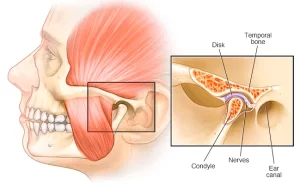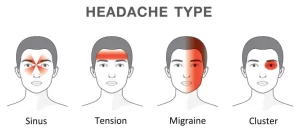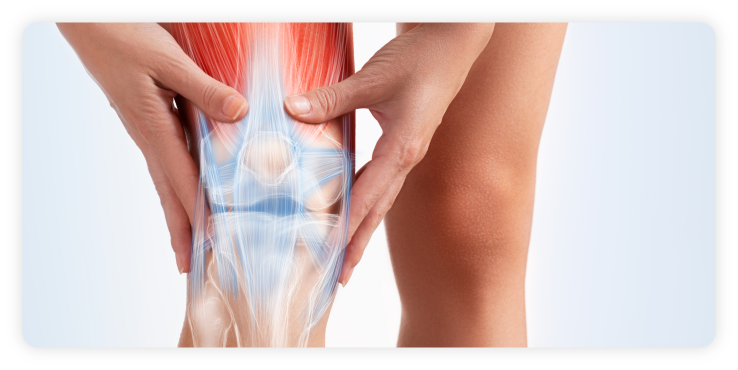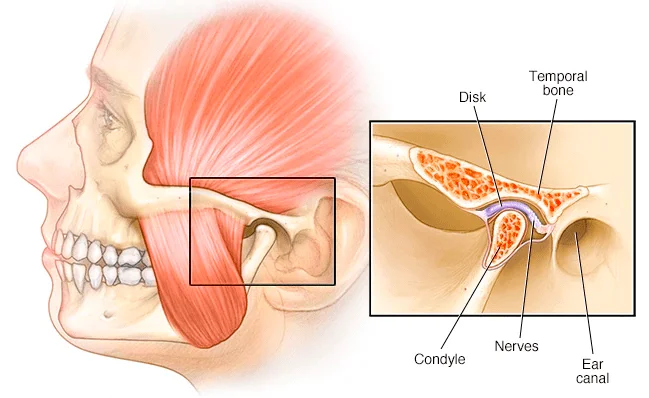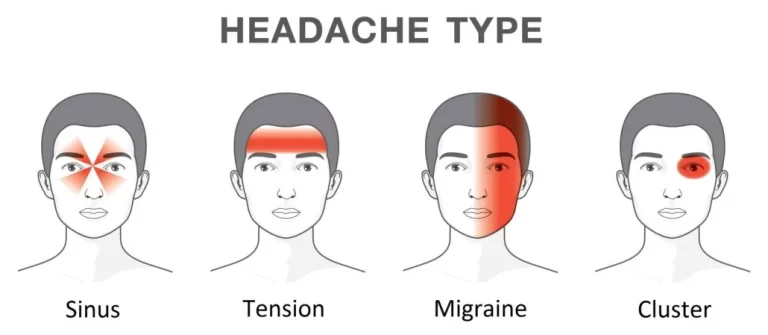PART 1 – INTRODUCTION
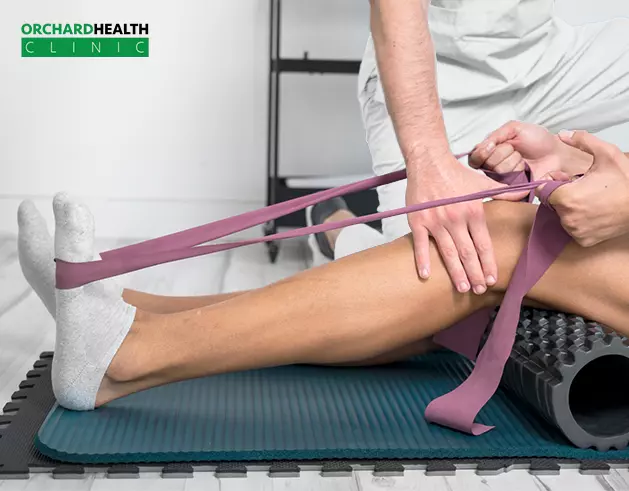
For the elderly population or those with a sports injury or chronic musculoskeletal condition, it is common for them to experience aches and pain in their body. When this occurs, many often visit a physiotherapy clinic to manage their ailments. Through various treatment modalities, physiotherapists can help patients bounce back and become healthy again.
Perhaps you have also considered seeing a physiotherapist but wish to know more before delving into the treatment. That is understandable. In that case, let our comprehensive guide serve as a roadmap to understanding what physiotherapists do and how they can help you regain functionality after an injury or manage chronic pain.
PART 2 – WHAT YOU SHOULD KNOW ABOUT PHYSIOTHERAPY
2.1. What Do Physiotherapists Do?
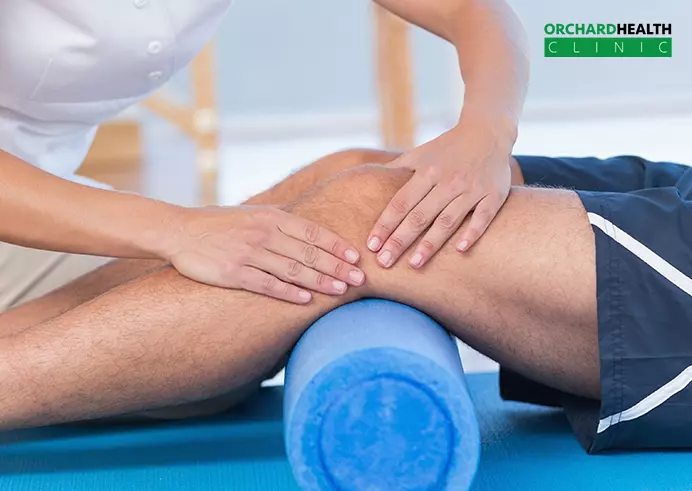
Physiotherapists are highly trained healthcare professionals with in-depth knowledge of the human body, such as anatomy and physiology. Through physical examination, diagnosis, education, and rehabilitation, they can treat individuals suffering from musculoskeletal problems caused by aging, illness, or injury, helping them restore body function and alleviate pain.
Some of the common conditions they can help treat include:
- Ankle pain
- Carpal tunnel syndrome (CTS)
- Frozen shoulder
- Headaches and migraines
- Jaw pain (TMJ)
- Joint sprains
- Knee pain
- Lower back pain
- Muscle sprains
- Neck pain
- Plantar fasciitis
- Post-operative rehabilitation
- Sciatica
- Scoliosis
- Tendinosis
Physiotherapists will assess your holistic health and well-being to pinpoint the cause of your injuries and other ailments. With this information, they can determine the most suitable approach to treat and manage your condition. Of course, they will also consider various factors, such as your injuries and mobility.
2.2. Treatment And Techniques Used In Physiotherapy

Physiotherapy is a multifaceted discipline that utilises an extensive range of treatments and techniques to promote healing, restore function, and enhance overall well-being. Moreover, everyone’s body is different. As such, some may respond more positively to specific treatments. Therefore, you may not expect treatment to consist of just physical therapy.
Instead, physiotherapists will pay attention to your body during rehabilitation and recommend suitable solutions to set you back on the path to recovery. Let us explore the common approaches physiotherapists employ to address various conditions and help you regain optimal physical health.
1. Movement and exercises
Physical therapy lies at the core of physiotherapy interventions. Physiotherapists can design personalised exercise programs tailored to your specific needs and goals. The aim is to enhance the range of movements of your joints, strengthen muscles, and improve your flexibility, balance, and coordination, thus preventing further injury and expediting recovery. Rest assured that your physiotherapist will demonstrate how you can safely perform these exercises at home without aggravating your condition.
2. Manual therapy
Occasionally, an injury may cause your joint movements to be limited. In such instances, your physiotherapist may utilise a hands-on approach to manipulate joints, soft tissues, and muscles. This treatment, termed manual therapy, involves various techniques, such as joint mobilisation and joint and soft tissue manipulation, to reduce pain, restore joint mobility, and improve tissue flexibility.
Manual therapy is an effective treatment for musculoskeletal conditions like back pain, neck pain, and joint stiffness. A physiotherapist’s skilful application of movements and pressure can help alleviate your pain and discomfort, as well as enhance your range of motion.
3. Cryotherapy
Swelling and inflammation in joints or muscles are often the cause of discomfort. As such, physiotherapists may recommend cryotherapy, or cold therapy, to constrict the blood vessels and numb nerve ending, resulting in reduced pain, swelling, and inflammation. This modality is often used to promote tissue healing and in conjunction with other physiotherapy interventions to enhance recovery.
4. Dry needling
Dry needling is a technique in which thin, sterile needles are inserted into trigger points or tight bands of muscle to release tension and alleviate pain. The process targets the myofascial trigger points to alleviate pain, restore muscle function and strength, improve blood flow, and facilitate the body’s natural healing response.
That makes dry needling an effective treatment for musculoskeletal conditions such as muscle spasms, myofascial pain syndrome, and chronic muscle tightness. However, like any other treatment, the effectiveness of dry needling may vary from person to person. The therapist’s skill in accurately locating myofascial trigger points can also play a significant part in its effectiveness.
5. Radial shockwave therapy
Radial shockwave therapy is a clinically proven non-invasive, multi-disciplinary procedure involving the use of high-energy sound waves to stimulate healing and treat localised musculoskeletal pain. During the session, controlled pulses of acoustic waves are directed to the affected area, promoting increased blood flow, tissue regeneration, and pain reduction.
As rapid percussion shock waves are directed into your soft tissues or outer layers of bone, they will re-injure the affected area on a cellular level. However, rest assured that this is done in a controlled manner to break up the scarring developing in your muscles, tendons, ligaments, or fascia layers.
This process helps stimulate the production of micro-blood vessels and bone-forming cells. The resulting neovascularisation promotes regeneration, bringing about faster healing and better nutrient supply to healing tissues. As a result, radial shockwave therapy can significantly improve mobility and function, particularly for chronic and stubborn conditions.
Learn More: Radial Shockwave Therapy
6. Therapeutic ultrasound therapy
When you hear the word “ultrasound”, your mind might immediately think of pregnancy. However, ultrasound has various other applications besides generating images of the womb. This modality can also be used in physiotherapy for many different conditions such as shoulder pain, ligament injuries, joint tightness, tendonitis, and carpal tunnel syndrome treatment.
Your physiotherapist will utilise ultrasound to generate heat within deep tissues to accelerate the healing process, improve blood circulation, and promote tissue relaxation, thus supporting rehabilitation efforts.
7. Electrotherapy
Electrotherapy is safe, non-invasive, and customisable to individual needs. This treatment involves the application of electrical currents to affected body parts, facilitating pain relief, muscle strengthening, and tissue healing.
Most physiotherapy clinics, including Orchard Health Clinic, employ various electrotherapy modalities, such as transcutaneous electrical nerve stimulation (TENS) and electrical muscle stimulation (EMS), in their practice to help patients manage chronic pain, improve muscle function, and promote tissue repair.
2.3. When Should You Visit A Physiotherapist?
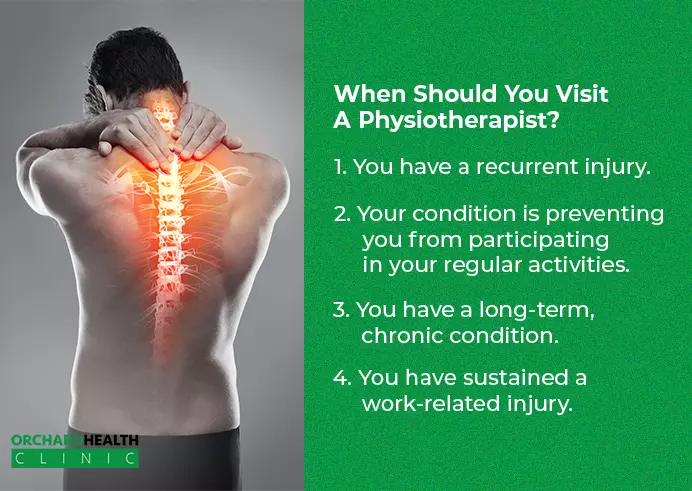
You should never wait for your symptoms to worsen or the pain to become unbearable before visiting a physiotherapy clinic. By proactively consulting a physiotherapist, you can ensure effective rehabilitation and take tentative steps towards achieving optimal physical health. Read on to learn when you may require a visit to a physiotherapist.
Sign #1: You have a recurrent injury
Recurring conditions can indicate underlying issues like muscle imbalances, poor movement patterns, or insufficient rehabilitation from previous injuries. Unfortunately, these injuries cannot be fully healed by resting and letting time pass without adequate management or treatment. Instead, you will require professional advice to recover fully.
So if you are struggling with the same injury for an extended duration, you may require more in-depth assessment and treatment to identify the root cause of the problem. A physiotherapist can assess your condition and develop a suitable treatment plan to promote long-term recovery and prevent further injury.
Sign #2: Your condition is preventing you from participating in your regular activities
Is your lower back pain stopping you from lifting weights at the gym? Or perhaps your knee pain is preventing you from participating in your regular hike during the weekend. Regardless of the situation, any injury that hinders your ability to engage in physical activities or exercises should necessitate a consultation with a physiotherapist.
Your physiotherapist can recommend appropriate exercises accommodated to your specific needs to promote healing, improve strength, and gradually restore your ability to engage in physical activities safely. They will also share ways to manage the pain to ensure your condition does not impact your lifestyle significantly.
Sign #3: You have a chronic condition
Long-term, chronic conditions, like arthritis and osteoarthritis, can significantly impact your quality of life. So if you are experiencing joint pain, stiffness, or limited mobility due to any chronic ailment, your physiotherapist can guide you in managing the condition and provide lifestyle modifications to minimise the impact on your daily activities.
Sign #4: You sustain a work-related injury
Work-related injuries are not restricted to those working manual labour. Even desk-based workers are susceptible. Repetitive motions and poor ergonomics, like poor sitting posture, can increase your risk of sustaining an injury such as back or neck pain. So do not dismiss these inevitable aches and discomfort; they must be addressed immediately. A physiotherapist can help with that!
PART 3 – HOW PHYSIOTHERAPY HELPS WITH PATIENT RECOVERY
When you are in pain, it might seem counterintuitive to move and make your muscles and joints work. Instead, the ideal solution may be to rest and let the body heal. Naturally, we are not suggesting you push your body during recovery and possibly aggravate your condition.
However, resting too much after your body has recovered can harm rather than help, as the repaired tissue could become too stiff. Moreover, reduced physical activity can lead to decreased mobility, aerobic fitness, and impaired balance, increasing your risk of re-injury and developing chronic pain.
A physiotherapist can prescribe suitable exercises within your abilities to help you achieve your fitness goal and maintain health and function. That is particularly helpful for the elderly population as they are prone to developing musculoskeletal problems, like osteoporosis, osteopenia, and sarcopenia, as they age.
3.1. Benefits Of Visiting A Physiotherapist

As you can see, working closely with a physiotherapist can be beneficial when recovering from an injury or managing a chronic condition. Discover how physiotherapy can empower you to take control of your body and achieve optimal physical health.
Benefit #1: Manage your condition and minimise pain
The underlying cause of your acute or chronic pain is not always easy to identify. A physiotherapist can assess your situation and develop a treatment plan for your discomfort. With proper rehabilitation, you can effectively manage your condition, reduce inflammation, and promote tissue healing, thus allowing you to regain control over your body and experience lasting pain relief.
Benefit #2: Improve muscle and joint flexibility
As we age, we are more prone to injuries and other complications as our joints and muscles deteriorate. Physiotherapy can help tackle these issues before they worsen. Your physiotherapist can suggest activities to strengthen your muscles and improve joint flexibility to enhance balance, coordination, and movement, allowing you to continue moving freely, perform daily activities with ease, and experience a greater sense of independence.
The same holds true for those experiencing a loss of mobility after an injury or accident. After a traumatic incident, your body and muscles will require time and practice to strengthen themselves. With the suggested exercises provided by your physiotherapist, you can optimise the functioning of your muscles and joints, enabling you to restore your body and regain your lost mobility.
Benefit #3: Prevent re-injury
Physiotherapy plays a crucial role in injury prevention. An experienced physiotherapist can offer advice on how to stay injury-free by exercising safely. For example, they will let you know what exercises to avoid if you have lower back pain.
Additionally, they will assess your movement patterns, identify muscular imbalances, and develop tailored exercise programmes to strengthen your weak areas to reduce the risk of setbacks and re-injury.
Benefit #4: Non-invasive treatment
Surgery can be a stressful experience. Therefore, it is unsurprising that many would wish to avoid going under the knife if possible. Fortunately, physiotherapy can help individuals avoid this invasive procedure in some cases. The focus is on promoting natural healing and restoring function without resorting to surgery through target exercises, manual therapy, and modalities.
Benefit #5: Boost athletic performances
Physiotherapy is not only about helping athletes recover from sports injuries. It can also be beneficial for those seeking to enhance their performance. A physiotherapist can work closely with you to assess your condition and prevent injuries. They will also provide guidance on strengthening your core and back muscles, improving reaction time, and keeping your joints flexible, thus helping you reach your full potential and enhance overall athletic performance.
3.2. What You Should Consider When Choosing A Physiotherapist
After learning about the numerous benefits of physiotherapy, you are undoubtedly eager to begin your rehabilitation process and improve your overall well-being. However, physiotherapy involves a collaborative relationship between you and your therapist, so it is essential to find the correct professional who understands your needs and provides effective treatment. Let us share the vital considerations to keep in mind when selecting your ideal physiotherapist.
Factor #1: Relevant license and accreditation
Physiotherapy is a regulated profession in Singapore. Therefore, therapists must possess a degree from an officially recognised further education program and register under the AHPC (Allied Health Professions Council. Always check that the clinic and attending physiotherapists hold the appropriate qualifications and certifications to practice physiotherapy locally.
These accreditations ensure that therapists have met specific education standards, competence, and ethical conduct. When a licensed physiotherapist is attending to your needs, you can have confidence in their knowledge and expertise in providing safe and effective treatment.
Factor #2: Ensure you feel comfortable with your physiotherapist

Physiotherapy requires constant communication between the therapist and the patient. As a patient, you are also responsible for your healing process. When you feel comfortable and have a rapport with your physiotherapist, your chances for a complete recovery are much better.
Remember, effective communication and a positive therapeutic relationship can contribute to a successful rehabilitation process. To help you choose a therapist with whom you feel comfortable and at ease, you should consider the following factors: the physiotherapist’s communication style, empathy, and ability to establish trust.
Your ideal physiotherapist should also listen attentively to your concerns, answer your questions promptly, and involve you in the decision-making process regarding your treatment. These attributes can help establish trust and create an environment conducive to open dialogue and collaboration, leading to better treatment outcomes.
Factor #3: The physiotherapist should offer various treatment modalities and techniques
Every individual has unique needs and responds differently to different treatments. What works for someone might not be as effective for another. A versatile physiotherapist with experience and expertise in various modalities and techniques can develop a personalised treatment plan that combines different methods to optimise your recovery and achieve the best possible outcomes.
Factor #4: Online reviews and references

Before making a final decision, take the time to research and gather feedback about the physiotherapist you are considering. Check online reviews and testimonials from previous patients to gain insights into their experiences. Positive reviews can provide reassurance about the therapist’s expertise and effectiveness.
Alternatively, consider asking colleagues or friends for references if you are aware of anyone who has sought physical therapy in the past. Their experiences with their physiotherapists can provide valuable firsthand information about the therapist’s skills, professionalism, and the quality of care they provide.
As you can see, choosing a physiotherapist requires careful consideration to ensure you receive the best possible treatment and care. Fortunately, you do not have to search far to identify your ideal physiotherapist.
At Orchard Health Clinic, our physiotherapy clinic fulfils all criteria! As a licensed practitioner with a combined 80 years of excellence, we offer a broad range of treatments and modalities to support your journey towards recovery and improved physical well-being. Rest assured that our physiotherapists take a personalised approach to your rehabilitation, ensuring you feel safe and comfortable throughout treatment.
PART 4 – FAQs ABOUT PHYSIOTHERAPY
Physiotherapy is a dynamic field offering comprehensive treatment for individuals dealing with injuries and chronic conditions or looking to enhance their physical well-being. Naturally, you will have several questions about the practice that might not be covered in our guide above. So let us compile the common queries we received in the past and our responses. Hopefully, this FAQ can help address any outstanding questions you may have.
Question #1: What can I expect from my treatment sessions at Orchard Health Clinic?
During your session with our physiotherapists, you can expect a professional and personalised approach to address your specific needs and goals. Our therapists will first conduct a consultation and a physical assessment to determine the nature of your condition and its underlying cause.
Based on the findings, our physiotherapists will discuss your treatment options and develop a customised treatment plan tailored to your needs. Throughout the various sessions, they will reassess your condition, track improvements, and make any necessary modifications to optimise your outcomes, ensuring you stay on the right track to recovery.
Question #2: How many treatment sessions do I require?
Each physiotherapy session is unique and tailored to your specific needs. As such, the frequency and duration of the sessions will depend on your condition, goals, and progress. Active participation in the treatment is also crucial to improving your physical health and well-being. So do not hesitate to communicate with our physiotherapists, ask questions, and discuss any concerns you may have during treatment.
Question #3: What should I wear for my physiotherapy sessions?
When attending physiotherapy sessions, wearing comfortable clothing that permits easy movement and access to the treated areas is essential. Treatments involving manipulation and soft tissue release will require the injury site to be exposed.
We also recommend comfortable footwear that is supportive and suitable for the activities you will be performing. Athletic shoes or sneakers with good cushioning and stability are generally recommended. Additionally, avoid wearing excessive jewellery, belts, or accessories that may interfere with the treatment or cause discomfort.
PART 5 – CONCLUSION
Investing in your physical health through physiotherapy is an investment in yourself. From injury rehabilitation to chronic pain management, this practice plays a vital role in restoring function, promoting well-being, and enhancing the overall quality of life. So empower yourself with the guidance, support, and expertise of a physiotherapist and embark on the path of healing and wellness today!
If you seek a comprehensive approach to improving your physical health, look no further than our team of qualified physiotherapists at Orchard Health Clinic. We do not simply address your injuries or aches, symptom by symptom, as they emerge. Instead, we seek to identify the root cause and propose an effective, long-term solution to your health problems. Do not hesitate to contact us to schedule an appointment with our physiotherapy clinic today!


